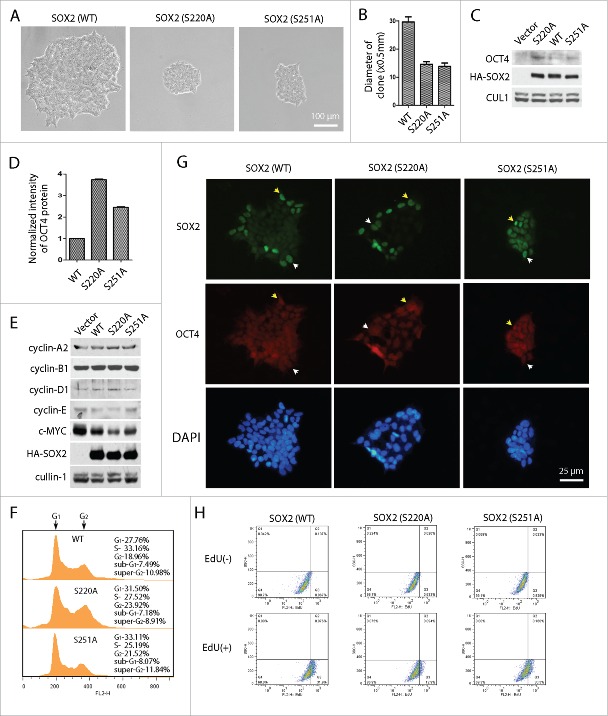Figure 5.
SOX2 mutants S220A and S251A promote SOX2 induced differentiated cells reprogramming and OCT4 expression. (A) Single-cell clones of 293 cells expressing wild type (WT) SOX2 and point mutated (S220A or S251A) SOX2. 293 cells were infected by lentivirus expressing SOX2, and selected under 2 μg/mL puromycin treatment. SOX2-expressing 293 cells were distributed by serial dilution into single cells. Clones were expanded and imaged at day 6. (B) Diameter of the clones in (A) were measured and calculated. Data presented as mean ±SD of 10 clones each. (C) Lysates of the clones in (A) were analyzed by protein gel blotting to detect the expression of OCT4. (D) The expressions of OCT4 in (C) were measured and quantified by Gel-Pro Analyzer. Mean ±SD of three independent experiments. (E) Cell cycle regulators were examined. Cyclin-E and c-Myc showed remarkably down regulation in S220A or S251A clones. (F) Cell cycle analyses of the SOX2 expressing clones. (G) Immunofluorescence imaging of SOX2 expressing clones showed regional expression of SOX2 and OCT4. Some cells expressed both SOX2 and OCT4 (arrow head in yellow); while more cells only expressed SOX2 (arrow head in white). (H) EdU incorporation experiments assayed by FACS suggested the decelerated cell proliferation in S220A clones.

